5 Reasons to Grow Texas Lantana (Lantana urticoides)
If you live in Texas, you are probably used to seeing Lantana in landscaping. There are a variety of Lantanas for sale at the nursery, but Texas Lantana (Lantana urticoides or Lantana horrida) is THE one you want in your garden!
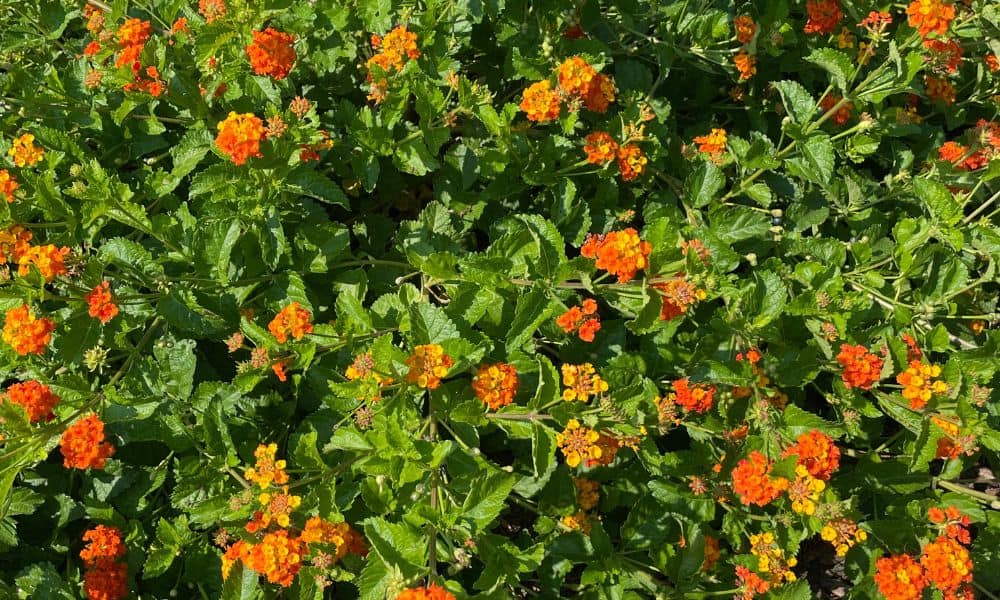
This hardy Texas native plant thrives in full sun. It is covered in orange and yellow flowers periodically throughout the growing season, from early summer through fall. It is a perennial shrub that tolerates a wide range of soils and requires little water once established.
Want more drought-tolerant perennial ideas for your yard? Start by downloading my FREE 10 Texas Drought Tolerant Plants PDF. You can take this handy one-pager with you to the nursery.
What does Texas Lantana look like?
Multi-stemmed deciduous shrub with multi-colored flowers and serrated pointy leaves. The flower heads are a mix of reddish orange with yellow centers, giving it another common name of Calico Bush.
Lantana produces deep purple-black berries that birds like, but are toxic for humans, so don’t eat them!
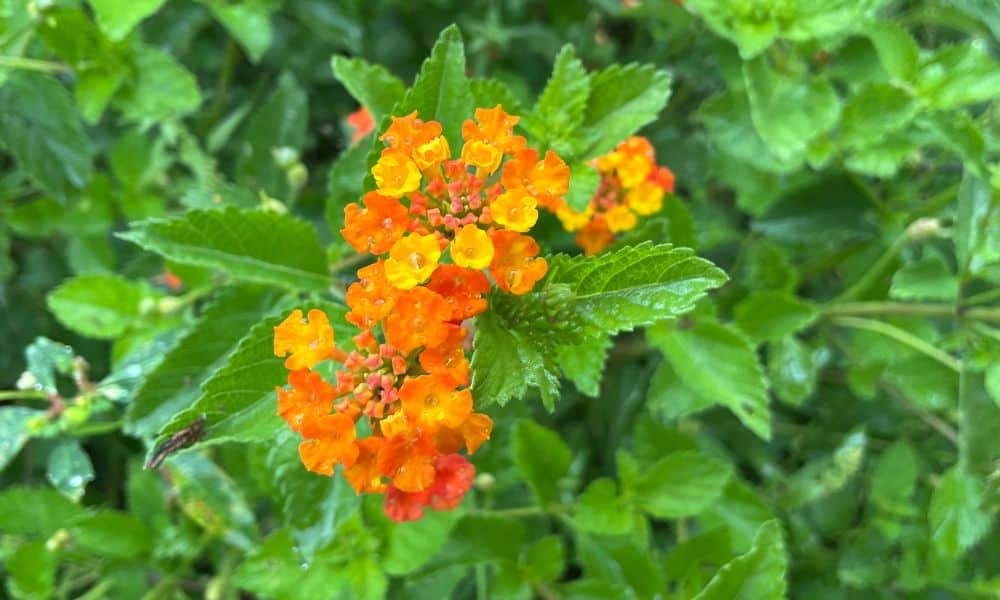
What is the native range of Lantana urticoides?
This species of Lantana is native to many parts of Texas, and parts of New Mexico and Arizona as well. It also goes by the scientific name Lantana horrida, which can be confusing! Both of these scientific names are referring to Texas Lantana.
5 Reasons to Grow Texas Lantana
1) It is drought tolerant
Texas Lantana thrives off of little water in well drained soils. This spreading shrub is a good choice for a xeriscape design with gravelly soils.
It will bring a burst of bright color during in the worst heat of the summer along with another heat-loving Texas native plants such as Esperanza (Tacoma stans).
2) It is deer resistant
I have Texas Lantana growing behind my fence where deer roam. It is one of the few plants they won’t eat! If deer like to visit your garden, make sure you plant these deer-resistant Texas native plants.
Texas Lantana looks great in a garden paired with other low growing shrubs such as Zexmenia and drought tolerant native perennials like Mexican Feather grass and Prickly Pear.
3) It is a great butterfly nectar plant
Lantana is a favorite of butterflies and other beneficial insects that are attracted to its showy flowers. The clusters of Texas Lantana blooms with yellow centers provide the perfect perch for butterflies to sip nectar.
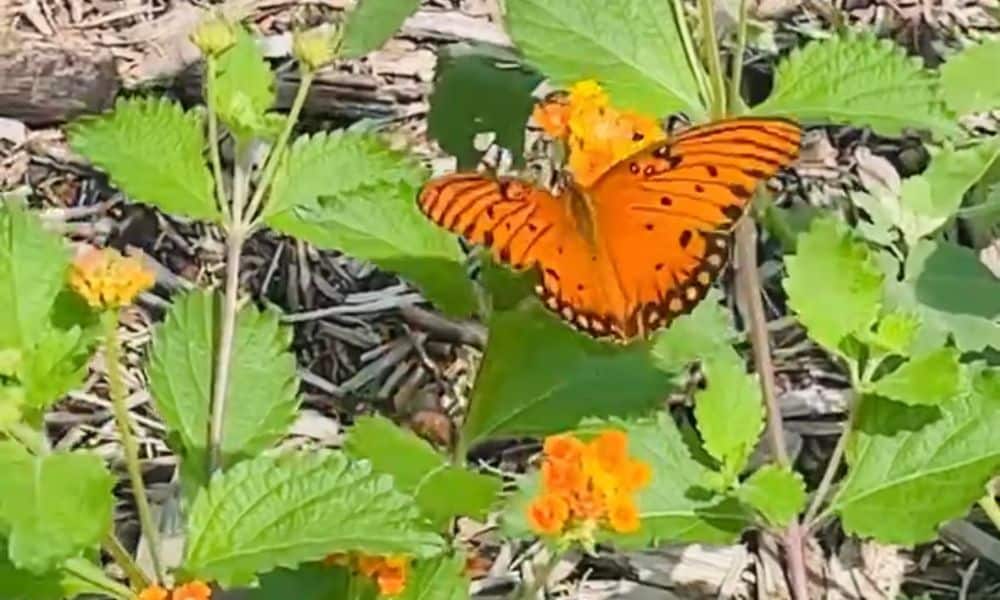
It is a must for a butterfly garden. It is also a great choice for outdoor containers, and can spill off the side of a large container.
4) It is low maintenance
Texas Lantana is a relatively low maintenance shrub as long as it has good drainage and plenty of sun. It will not perform as well in partial shade. Once established, it needs minimal supplemental water.
Lantana does not need much pruning, although if you want to keep it compact and encourage more blooms, you can prune it back between flowering periods. Lantana flowers appear on new growth.
This deciduous shrub will go dormant and die back to the ground in the winter. In late winter, you can cut back its woody stem and new growth will appear from the base in the spring. Lantana is a spreading shrub that grows at a fast rate.
5) Not invasive like other Lantana species
Texas Lantana is the best choice for Texas landscapes. Look for its scientific name (either Lantana urticoides or Lantana horrida) on the plant label when you are at the nursery.
Many of the other Lantana plants sold at the nursery are not native to the United States. Some of them tend to escape cultivation when birds spread their seeds and can cause problems in natural areas by crowding out native vegetation.
Non-native Lantana species to avoid
When purchasing Lantana, skip the big-box garden center and go to local nursery that specializes in native plants. The big-box nurseries are most likely to sell these non-native, invasive Lantanas:
- Lantana camara – native to West Indies, Columbia, and Venezula. This species can invade forested areas and create dense thickets, crowding out native plants. Some versions can look similar to Texas Lantana, so be sure to read the plant label carefully.
- Lantana montevidensis – common name is Purple Trailing Lantana. It also has invasive tendencies in central Texas, with examples of it invading natural areas at the San Antonio Botanical Garden and Sessom Creek Natural Area in San Marcos.
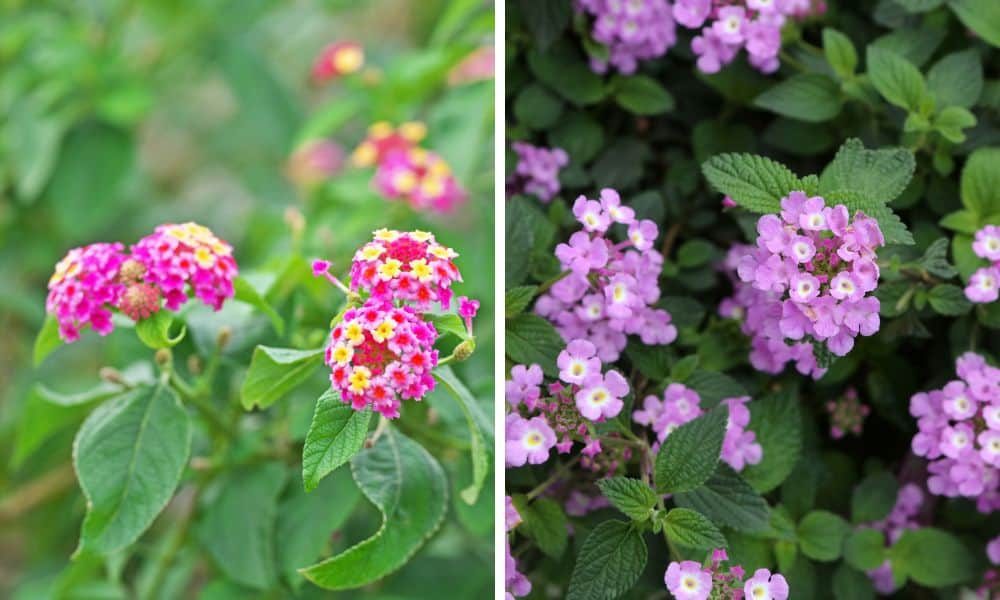
Lantana Cultivars
In addition, there are a variety of cultivars for sale at nurseries. While these cultivars may not necessarily be invasive, opt for the straight native species of Lantana urticoides when possible.
Cultivars can be identified by a catchy name in parentheses after the scientific name on the plant label. They may also have a trademark (™) symbol such as:
- Lantana “Confetti™”
- Lantana “Dallas Red”
- Lantana “New Gold”
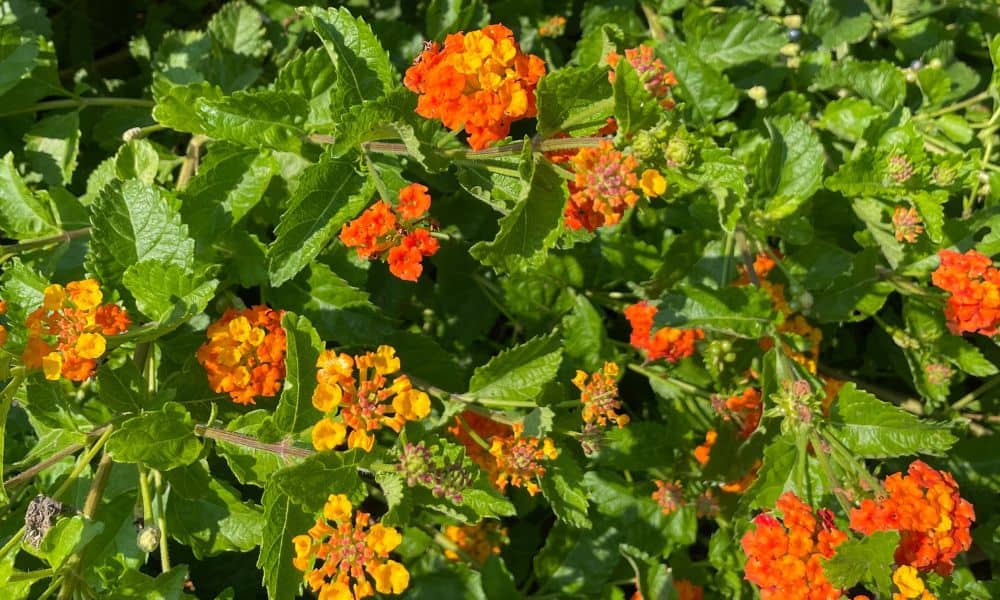
Download the Free PDF: Texas Drought Tolerant Plants
Looking for more drought-tolerant Texas natives? I created a handy one-page PDF for you to print and take along with you to the plant nursery. It includes a thumbnail photo of each plant along with both its common and scientific name and helpful growing info. Get it here:

Save this plant idea to Pinterest!
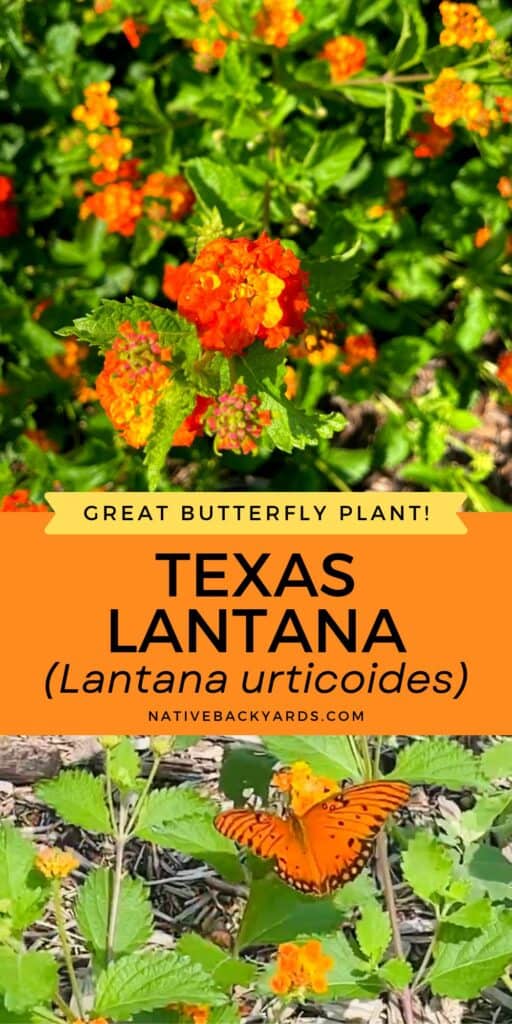

Welcome to Native Backyards! I’m Haeley from San Antonio, Texas, and I want to help you grow more native plants.
I have seen firsthand how the right plants can bring your yard to life with butterflies, bees, and birds. I’ve transformed my yard with Texas natives and I’m excited to share what I’ve learned with you.
Join my newsletter here! – each week I’ll send you helpful tips to make your native plant garden a reality!
Want to learn more about me and my garden? Check out my About page!
